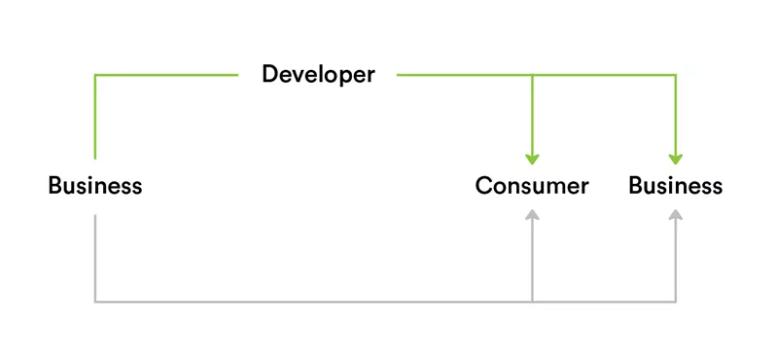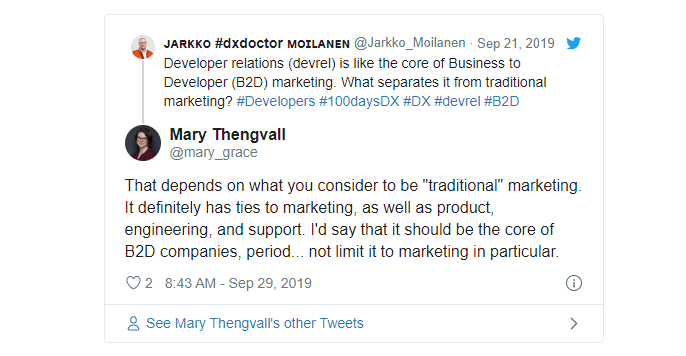Metrics Matter: Get the B2B Sales Boost You’re Looking For!
Need a B2B sales boost? It’s not as hard as you think. The right tactics and tools can get you moving in the right direction, and the right metrics can help you build a data-driven marketing powerhouse for the wins you need in this troubled economy.
Let’s talk about three common marketing tactics and methods, and we’ll offer three metrics that will help you measure your success with each one!
Become the Baron of B2D
B2C, or business-to-consumer marketing, is by its own nature far less about individuals than B2B (business to business) marketing. B2C marketers strive to make things feel personal, but it’s about archetypes, personas, and broad demographics. B2B marketing is all about relationship building and deeply understanding the needs of your client.
B2D, or business to the developer, is a newer segment, and success here involves a mix of what works for B2C and B2B. With B2D, tech and SaaS companies are marketing themselves as a tool or service directly to developers. You’re marketing directly to developers and thus have the sales cycle of B2C, and the broad base to market to of B2C, but the expectations of product support and the business strategies driving the purchase are often closer to what B2B marketers face.
Developers are often looking to make exchanges of value: they are looking for a tool to fulfill a need easier and cheaper than they can do it themselves. Developers are used to pulling tools and code from a variety of resources. From e-commerce solutions to analytical tools to dedicated APIs and training resources, B2D marketers put those tools in the hands of developers who understand the need for them, making this channel far more successful than selling to the purchasing departments of their companies.
As we mature from the tech booms of the last two decades, developers are now in the role of expanding and improving, and optimizing their products even more than they are building things from the ground up. Building relationships with developers not only can improve sales but by building credibility with developers, it helps build the relationships necessary for larger-scale B2B marketing and big-ticket enterprise sales.

Organizations often trust the boots-on-the-ground developers for their technical expertise; when your top developer says ‘I need this tool,’ the C-suite usually listens. And while many developers might prefer a homebrewed or open-source solution, a professional product backed by a reputable company is often the solution the C-suite and devs can agree on.
Metrics:
● Lead-to-Close Conversion Rate
This one’s fairly easy: If your marketing team generated 100 leads last month and 15 sales, then this rate would be 15%. This can be tracked for any time period and different demographics.
● Marketing-Originated Customers
How many of your customers came from a marketing initiative? Divide this by the total number of customers acquired, and you can track the improvement of your marketing team and how they’re contributing to your customer base.
● Marketing-Influenced Customers
How many of your leads interacted with your marketing materials or efforts? How many closed? Divide by your total number of converted leads and you have a viable metric.
Following Up Like a Boss
It’s easy to drop the ball on things like following up when you’ve got a list of leads and clients a mile long. Automation is great, but you have to keep things personalized and build the relationship. One painless solution is using an email follow-up extension, you can set up follow-up emails from your marketing or sales teams to contacts and leads on a customized, pre-set schedule, thereby making sure you don’t miss a chance to convert a solid lead to a happy customer. Your marketing and sales teams can keep reaching out to new customers during the time that they might spend working on these follow-ups. Best of all, this can be personalized and doesn’t have to look like a form letter. And a good follow-up email extension will even include a built-in dashboard to track everything so you can easily apply metrics to measure your success.
Metrics:
● Average Sales Cycle
How long does it take to move your average prospect from initial contact to a sale?
● Retention
Follow-up emails, even after the sale, can help improve this; retaining customers is almost always easier and less expensive than attracting fresh ones!
● Availability
When your customer needs you, are you responsive? Automation helps you respond even when no one’s at the office. You may work on a 9-to-5 schedule, but your customers may be in different time zones or working on different schedules.
● Email opens
Experiment with different styles and tactics in your automated emails and your open rates can help you figure out what’s working…and what isn’t.
Be The Expert: Content Marketing and Thought Leadership
If you’re operating in the B2B and B2D sectors, chances are you’re active on LinkedIn and other business-oriented sites. And businesses and developers are often looking for solutions more than products. If you’re the expert they trust to solve their problems, then they’re much more likely to adopt your products to solve their problems.
Blog posts, videos, infographics, and other content can be used across many social media platforms and respun to keep attracting leads. Using apps and services that track trending topics to engage in the conversation surrounding current issues and events can draw attention to your products and how they can help businesses and developers address those issues.
Metrics:
● Earned Media Impact
Thought leadership can often lead to being a media source for content and thoughts surrounding events. Track when you earn media coverage via radio, TV, print, or online sources and whether there is a bump in engagement, leads, and sales. Correlation doesn’t always equal causation, but if you’re tracking your data well enough, you should be able to discern patterns and tell the impact this is having.
● Cross-platform behavior
When people discover you on one platform (such as LinkedIn) but then begin to engage with you on other platforms (Facebook, Instagram, etc.), that’s an outstanding sign of engagement! Track this to show how your content marketing and thought leadership efforts are contributing to brand image and customer loyalty.
● Lead Channel Origination Rate
Track what channels provide the most leads to help determine where to focus; many smaller businesses and organizations just don’t have the time to be everywhere, so focus your resources where they get the most impact. Just because one platform is popular doesn’t mean it’s the best for you, so tracking your origination rate will tell you what channels and platforms work for your brand.

Match Your Metrics To Your Methods
These are just a few metrics that work for these examples, but there are infinite ways to measure your effectiveness. The most important thing to remember is that your metrics should align with both the methods and tactics you’re using, and the end result you’re seeking, be that brand awareness, lead generation, or engagement.
Feel free to share and tag us on your favorite social media channels and let us know what metrics are working well for you and your methods!

Author bio:
Michael Habiger is a marketing nerd and quality content enthusiast, with 6 years of professional experience. Currently, he works as a content marketing specialist at FollowUpFred.

